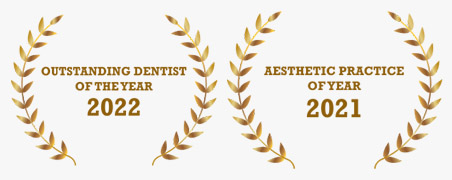At the AESTHETIC Smiles dental clinic in Mumbai, we use different whitening systems:
- Whitening with photoactivation: it is carried out entirely in the dental office. The treatment lasts about 30 minutes, and you can achieve whitening upto5 shades on the color scale.
- Gel whitening: at home and in the office. This whitening is done by taking molds of your mouth at the AESTHETIC Smiles dental clinic in Mumbai, where the dentist will explain how to apply the product in the trays to follow the treatment at home. The practice will provide you with a kit with the whitening gel syringes and cuvettes.
- Non-vital teeth whitening: it is carried out on teeth that have suffered some trauma that has affected the dental nerve. This procedure is performed exclusively in the dental office.
What are the other whitening options available on the market?
There are three methods to teeth whitening in Mumbai options available today. All three depend on varying concentrations of peroxide and varying application times.
- Whitening in clinic
A great color change in a short period of time is the primary benefit of in-clinic whitening. The protocol involves the carefully controlled use of a relatively high concentration. The dentist applied peroxide gel to the teeth, but it is necessary to protect the gums with a painted rubber dam before. Generally, peroxide stays on your teeth for various 15-20 minute intervals that add up to an hour (maximum).
- Professionally dispensed take-home kits
Take-home kits incorporate an easy-to-use, low-concentration peroxide gel that stays on your teeth for an hour or more (sometimes overnight). The gel is applied to the teeth with custom whitening trays that look like mouth guards.
- Over-the-counter products
The cheapest teeth whitening option, over-the-counter whitening, involves using a store-bought whitening kit, which features a whitening gel with a lower concentration than professionally dispensed take-out whiteners. The gel is applied to the teeth via one-size-fits-all paint trays, strips, or applicators. In many cases, this can only whiten some of the front teeth, unlike custom applicator trays that can whiten the entire smile.
Risks
Teeth whitening treatments are considered safe when the procedures are followed as directed. However, there are certain risks associated with whitening that you should be aware of:
- Sensitivity: Whitening can temporarily cause an increase in sensitivity to temperature, pressure, and touch. This is more likely to occur during in-office whitening, where higher-concentration bleach is used. People most at risk for whitening sensitivity are those with recessed gums, significant cracks in the teeth, or leaks resulting from faulty restorations. Sensitivity to whitening does not last more than a day or two, but in some cases, it can persist for up to a month. Some dentists recommend a toothpaste that contains potassium nitrate for sensitive teeth.
- Gum irritation: Most of the people who use peroxide bleaches experience some degree of gum irritation as a result of the of the bleach concentration or contact with the trays. Such irritation generally lasts for several days, dissipating after the whitening has stopped or the peroxide concentration has decreased.
Keeping the results
To extend the longevity of the whitening, dentists will likely recommend:
- Home follow-up or maintenance whitening: implemented immediately or performed infrequently once a year.
- Avoid dark-colored foods and drinks at least a week after bleaching.
- Whenever possible, drink dark-colored beverages through a straw.
- Practice excellent oral hygiene: brushing and flossing after meals and before bed.
















